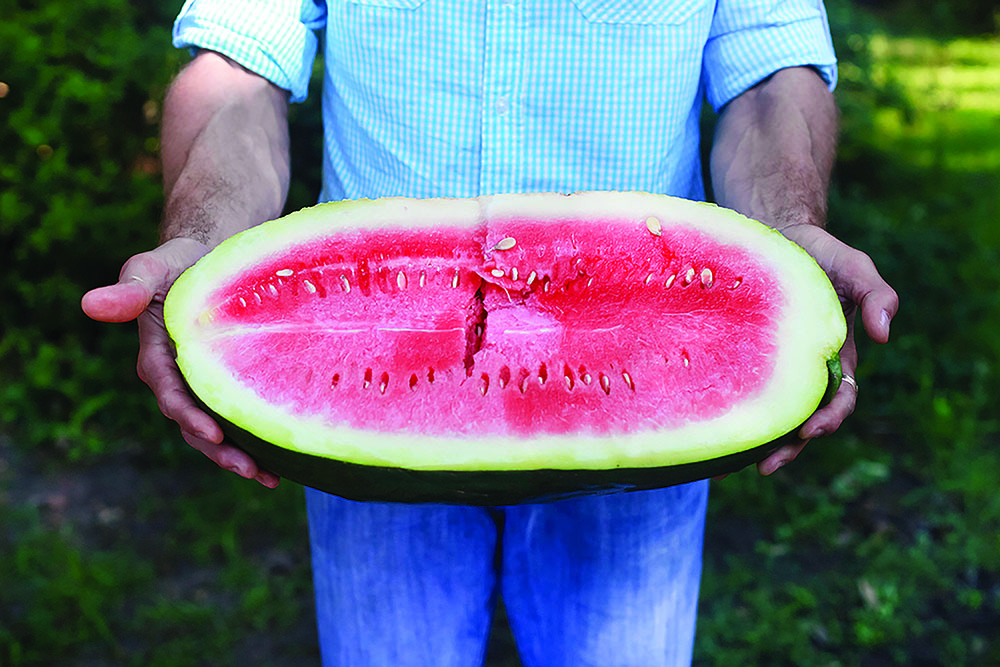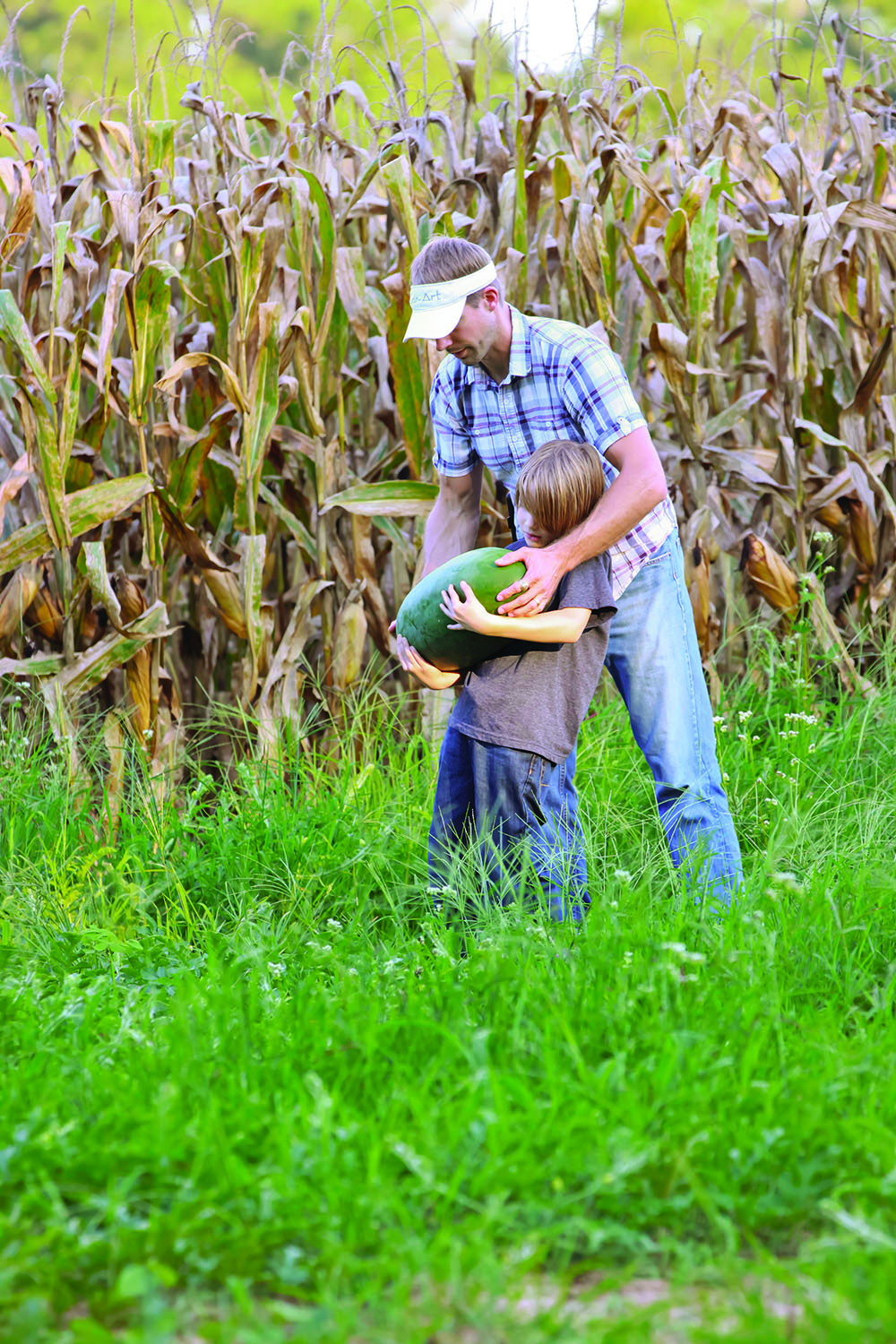
A heritage watermelon famed for its large fruit and delicious, sweet flesh.
Story by Chris Smith | Photos by Heather Grilliot
One of the enjoyable things about heirloom seeds is that they come with a good story. But don’t worry, they’re not all talk and no substance. A variety that has stood the test of time, been saved year on year and handed down from generation to generation usually tastes pretty good too. Sadly, our current food system often doesn’t care about taste, but instead prioritizes uniformity, storage and shipping qualities.
The Bradford Watermelon is a wonderful heirloom with a classic narrative of glory, loss and revival and could be the poster child for the story of our food culture over the last century. Its story begins in 1783 on a British prison ship bound for the West Indies. A Georgian named John Franklin Lawson was a prisoner onboard and saved the seeds from a slice of watermelon offered to him by the captain. Upon being freed and returning home, Lawson planted and grew those seeds, and the watermelon was noted for its sweetness and flavor.
The Bradford connection appears around 1840, when Lawson sent Nathaniel Napoleon Bradford of Sumter County, SC some seeds. Bradford crossed the Lawson variety and the Mountain Sweet variety to produce the Bradford Watermelon. From the 1850s to the 1910s, it was famed in the South and beyond for its ability to produce late in the season. It’s known to be drought tolerant and incredibly tasty. However, the last commercial planting of the Bradford Watermelon was recorded in 1922.
Dr. David Shields, distinguished food historian, author and professor at the University of South Carolina, began hunting for the seed in 2005. “I checked germplasm banks, seed saver’s exchanges, read original seed catalogs from the 1800s, and wrote watermelon growers in the boondocks rumored to have old melons. They tended to have old bad melons, but I was unable to find the Bradford. I almost lost hope,” says Shields.

Nat Bradford planted his first watermelon patch when he was five years old and passed on the tradition to his children.
Why did such a fantastic watermelon nearly go extinct? The answer is: our food culture has gone awry. Could the Bradford Watermelon be stacked ten deep and loaded on trains to travel the country with little loss from bruising and splitting? No, its thin skin and soft flesh damage easily. New watermelons were bred for larger commercial operations with tougher, thicker skin. From 1903 to 1983 there was a 93 percent varietal loss in commercially available seed varieties. The Bradford Watermelon was not alone in falling out of favor, despite its superior flavor.
Enter the contemporary Nat Bradford of Sumter, SC, who can trace the history of his namesake watermelon back to his grandfather. “My family has been maintaining this watermelon in a little field in Sumter for well nigh onto 100 years,” says Bradford, who planted his first watermelon when he was five years old and learned the tricks of varietal maintenance and seed saving from his grandfather. It was by chance that he stumbled upon a reference to a Bradford Watermelon in an 1850s book listing the best fruits and vegetables of the time. It took some effort, investigation and serendipity, but in 2012 Bradford connected with Dr. Shields, who confirmed the watermelons were one and the same. Bradford discovered he was an eighth-generation watermelon grower and seed saver of a famed watermelon and was inspired to champion its reintroduction.
Along with the watermelon came the food culture. Nat Bradford is making watermelon molasses, watermelon brandy and watermelon rind pickles, all of which are possible because of the exceptional fruit characteristics—extremely sweet, thin rinds, delicious flesh and large (up to 30 pound) fruits. He has partnered with chefs, distilleries and picklers to reintroduce these products, and last year he chose Asheville’s Sow True Seed to be the sole distributor of the Bradford Watermelon seeds. These seeds are grown and saved not more than 10 miles from the original breeding site. The aim and the hope is to get this watermelon the attention it deserves and have people save the seed far and wide so it will never be threatened by extinction again.
Learn more at bradfordwatermelons.com.






